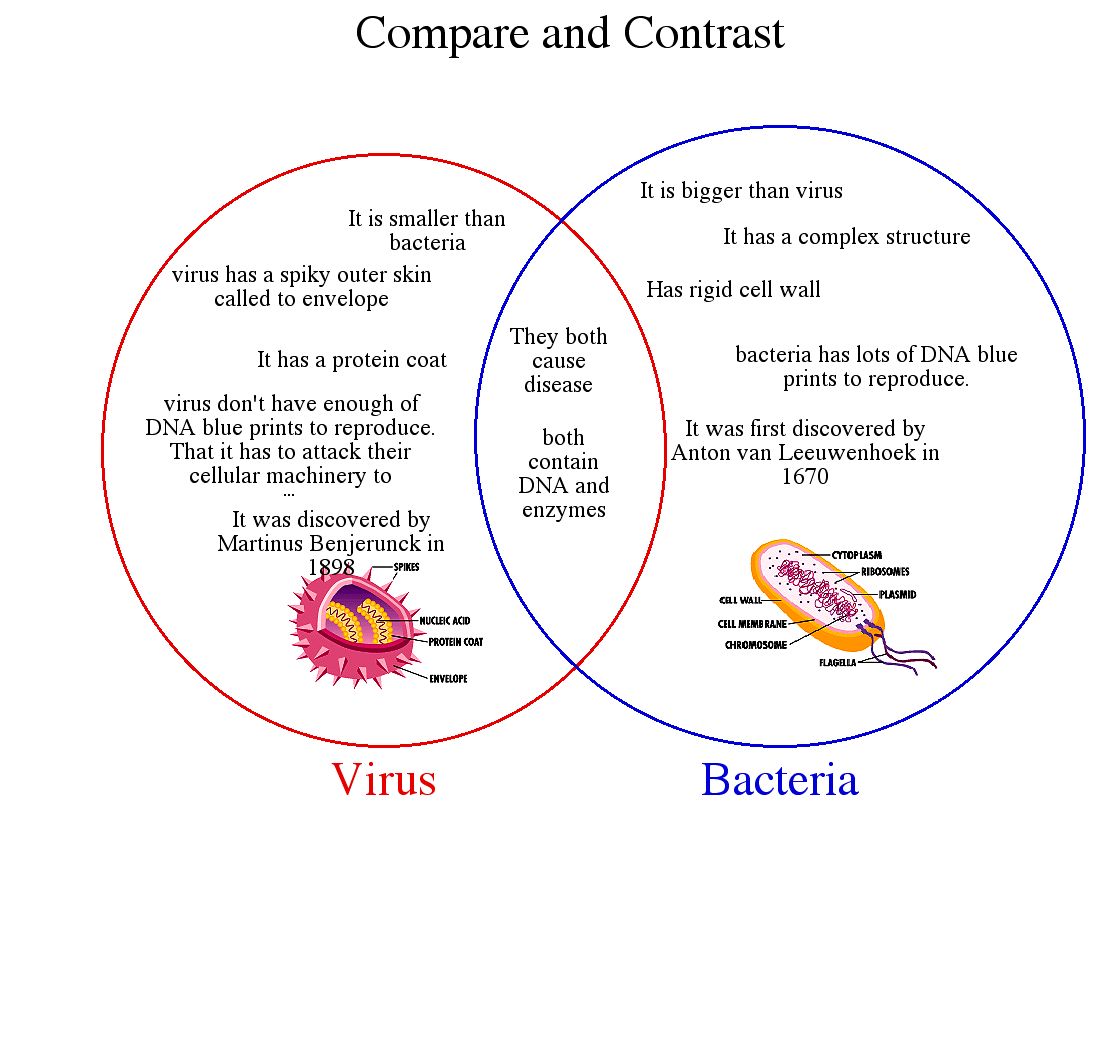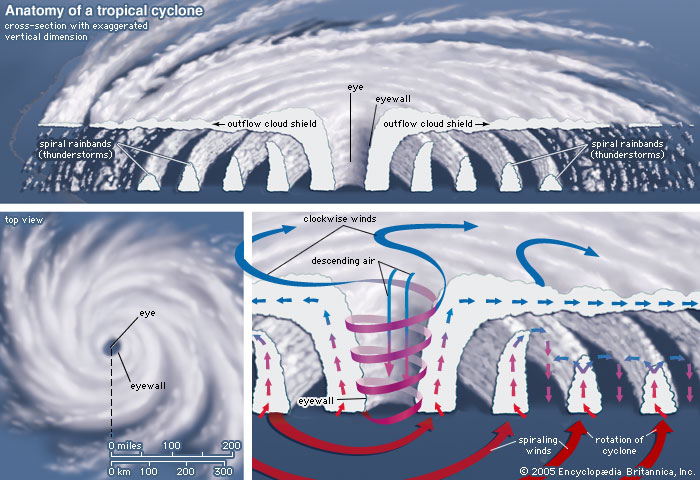Most people do not know the difference between a viral infection and a bacterial infection. Heck, most people do not even know that there are different kinds of infections. To a lot of people, infection = "give me some antibiotics so I'll get better straight away!".
It's hard to blame them. Both bacterial and viral infections are usually very similar in their symptoms, for example, fevers and sore throats. However, they are caused by very different things.
Bacteria are single-celled "living" microorganisms that reproduce by dividing. Bacteria exist everywhere, inside and on our bodies. Most of them are completely harmless and some of them are very useful. But some bacteria can cause diseases.
Unlike bacteria, viruses are not "living" organisms but capsules of genetic material. They require living hosts — such as people, plants or animals — to multiply. Otherwise, they can't survive. When a virus enters your body, it invades some of your cells and takes over the cell machinery, redirecting it to produce the virus.
 Despite their similarities, it is absolutely imperative that we distinguish between the 2 infections. This is because medications that are effective against one is not effective against the other. It can be difficult, even for a doctor to distinguish which is the cause of a specific infection. According to this Infection article found at Wikipedia, the following are the typical symptoms that you see when you're having a:
Despite their similarities, it is absolutely imperative that we distinguish between the 2 infections. This is because medications that are effective against one is not effective against the other. It can be difficult, even for a doctor to distinguish which is the cause of a specific infection. According to this Infection article found at Wikipedia, the following are the typical symptoms that you see when you're having a:
Viral infection - In general, viral infections are systemic. This means they involve many different parts of the body or more than one body system at the same time; i.e. a runny nose, sinus congestion, cough, fever, body aches etc.They can be local at times as in viral conjunctivitis or "pink eye" and herpes. Only a few viral infections are painful, like herpes. The pain of viral infections is often described as itchy or burning.
Bacterial infection - The classic symptoms of a bacterial infection are localized Redness, Heat, Swelling and Pain. One of the hallmarks of a bacterial infection is local pain, pain that is in a specific part of the body. For example,if you get cut and the cut gets infected with a bacterium, it will be painful right where the infection is. If you have a sore throat and the infection is bacterial, one side of the throat is often more sore than the other. An ear infection is usually bacterial if one ear hurts and the other doesn't. An infection that produces pus is always bacterial.
Treatment
Bacterial infections are usually treated with a special antibiotic that only kills the bacterium that has caused the disease. To make sure that you get the right treatment, your doctor may take a sample, for example a swab from the throat or a urine sample.
Treatment of a viral infection is usually left to the patient's own immune system. Doctors usually advise the patient to take lots of fluids and to rest at home. Painkillers are sometimes prescribed to bring down the temperature and alleviate some of the symptoms. Other than that, vaccines have also been developed against most viral diseases. The vaccine gives the body some help in quickly and effectively fighting off the virus.
Antibiotics have NO EFFECT upon viral infections such as colds or flu, and it is important that we limit antibiotic use only to bacterial infections that won't get better on their own.
Over-use of antibiotics reduces their effectiveness by encouraging the growth of antibiotic-resistant bacteria, which is a serious and increasing problem globally.
Antibiotic resistance is another interesting and important health topic, which I'll explore the next time.
It's hard to blame them. Both bacterial and viral infections are usually very similar in their symptoms, for example, fevers and sore throats. However, they are caused by very different things.
Bacteria are single-celled "living" microorganisms that reproduce by dividing. Bacteria exist everywhere, inside and on our bodies. Most of them are completely harmless and some of them are very useful. But some bacteria can cause diseases.
Unlike bacteria, viruses are not "living" organisms but capsules of genetic material. They require living hosts — such as people, plants or animals — to multiply. Otherwise, they can't survive. When a virus enters your body, it invades some of your cells and takes over the cell machinery, redirecting it to produce the virus.
 Despite their similarities, it is absolutely imperative that we distinguish between the 2 infections. This is because medications that are effective against one is not effective against the other. It can be difficult, even for a doctor to distinguish which is the cause of a specific infection. According to this Infection article found at Wikipedia, the following are the typical symptoms that you see when you're having a:
Despite their similarities, it is absolutely imperative that we distinguish between the 2 infections. This is because medications that are effective against one is not effective against the other. It can be difficult, even for a doctor to distinguish which is the cause of a specific infection. According to this Infection article found at Wikipedia, the following are the typical symptoms that you see when you're having a:Viral infection - In general, viral infections are systemic. This means they involve many different parts of the body or more than one body system at the same time; i.e. a runny nose, sinus congestion, cough, fever, body aches etc.They can be local at times as in viral conjunctivitis or "pink eye" and herpes. Only a few viral infections are painful, like herpes. The pain of viral infections is often described as itchy or burning.
Bacterial infection - The classic symptoms of a bacterial infection are localized Redness, Heat, Swelling and Pain. One of the hallmarks of a bacterial infection is local pain, pain that is in a specific part of the body. For example,if you get cut and the cut gets infected with a bacterium, it will be painful right where the infection is. If you have a sore throat and the infection is bacterial, one side of the throat is often more sore than the other. An ear infection is usually bacterial if one ear hurts and the other doesn't. An infection that produces pus is always bacterial.
Treatment
Bacterial infections are usually treated with a special antibiotic that only kills the bacterium that has caused the disease. To make sure that you get the right treatment, your doctor may take a sample, for example a swab from the throat or a urine sample.
Treatment of a viral infection is usually left to the patient's own immune system. Doctors usually advise the patient to take lots of fluids and to rest at home. Painkillers are sometimes prescribed to bring down the temperature and alleviate some of the symptoms. Other than that, vaccines have also been developed against most viral diseases. The vaccine gives the body some help in quickly and effectively fighting off the virus.
Antibiotics have NO EFFECT upon viral infections such as colds or flu, and it is important that we limit antibiotic use only to bacterial infections that won't get better on their own.
Over-use of antibiotics reduces their effectiveness by encouraging the growth of antibiotic-resistant bacteria, which is a serious and increasing problem globally.
Antibiotic resistance is another interesting and important health topic, which I'll explore the next time.

